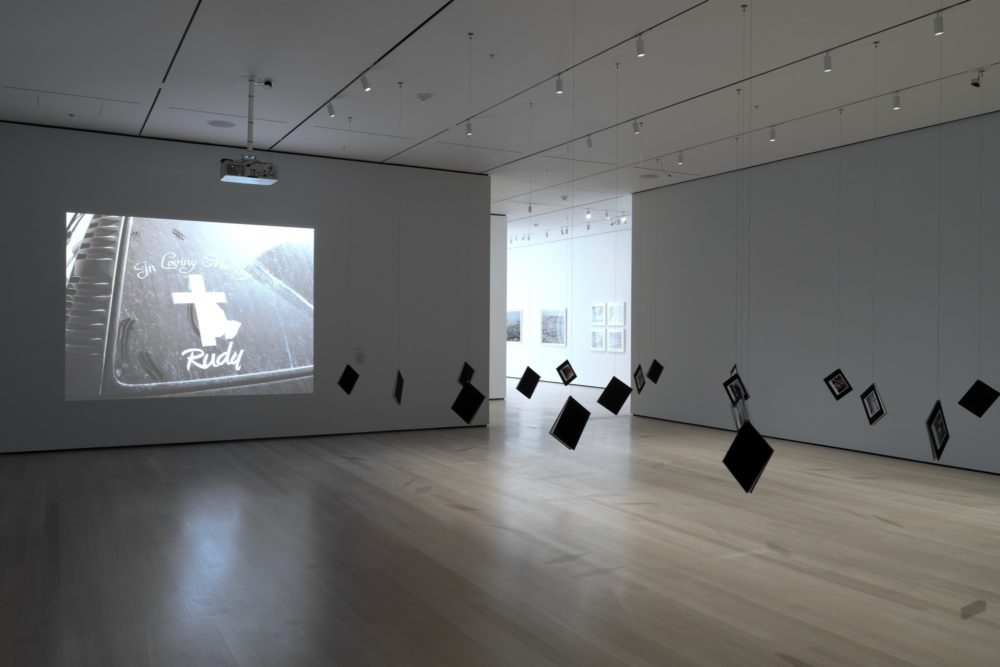Drawing heavily from the Whitney Museum of American Art’s permanent collection, Programmed: Rules, Codes, and Choreographies in Art, 1965–2018 includes a broad range of works… Continue Reading A Daring Balancing Act: “Programmed” at the Whitney
Posts published in “Featured”
Despite a month of chilling temperatures, Joan Semmel’s captivating new paintings on view in A Necessary Elaboration at Alexander Gray Associates (January 10 – February… Continue Reading Reflections on the Body and Self in Joan Semmel’s New Paintings
Bruce Nauman: Disappearing Acts opened in March at the Schaulager Museum in Basel, Switzerland, to rave critical reviews and social media buzz. Here in New… Continue Reading Master Manipulator: Bruce Nauman at MoMA
One of the major advantages of studying at the Institute of Fine Arts at NYU is that our school is situated in New York City.… Continue Reading Door to Manhattan: An Interview with Curator Kelly Baum
Addressing themes not often united in contemporary art exhibitions, the Bronx Museum of the Art’s stellar presentation of Diana Al-Hadid: Delirious Matter (July 18—October 14,… Continue Reading Fleeting Structures: Diana Al-Hadid at the Bronx Museum
I was first intrigued by the Iranian artist Nasrin Sheykhi’s collage drawings and then by her story, and how she has navigated a perilous path… Continue Reading An Interview with Artist Nasrin Sheykhi
Never shy about her political stance, Beyonce openly endorsed candidate Hillary Clinton in the 2016 presidential election, making clear her belief that the future is female. Her album Lemonade, which Beyoncé produced the same year and complemented with powerful video content, illustrates her feminist stance through explicitly political, but also personal references.
One of the most memorable scenes from Lemonade is the second song Hold Up. Here, Beyoncé elegantly steps out of a neoclassical building followed by an overflowing mass of water. Then, she jubilantly leaps onto a street, where she takes a baseball bat away from a child and begins to smash the windows of the cars parked on the side of the street. This unexpected twist of tone departs from the innocent ecstasy evoked in the first scene reminds me of Pipilotti Rist’s 1997 video work Ever is Over All. Here, a woman in a blue dress gleefully walks down a street before, all of a sudden, starting to smash cars’ windows with a long flower stem.

In a gallery off to one side in the ongoing (through May 28, 2018) retrospective on the photography of Stephen Shore at the Museum of… Continue Reading Art World Meets Instagram
In early November, IFA MA student Cindy Qi interviewed Hu Xiangqian, whose work is currently exhibited at the Institute of Fine Arts, NYU as a part of the fall Duke House Exhibition chin(a)frica: an interface, on view through February 18, 2018. Hu Xiangqian (b. 1983) was born in Leizhou, Guangdong Province and graduated in 2007 from Guangzhou Academy of Fine Arts. He currently lives and works in New York City. Hu’s artistic practice is grounded in performance and video works featuring an intentional amateurishness and crudeness. Notable exhibitions include the Gwangju Biennial (2014) and the Shanghai Biennial (2016). A photographic still of his durational performance piece entitled The Sun (2008) hangs in the Institute’s Lecture Hall. The interview was conducted in mandarin Chinese and later translated to English by Cindy Qi.
CQ: Having been in New York for several months now, do you have any discoveries or inspirations you would like to share? Have you decided what kind of work to make during your time here?
来到纽约这几个月你有什么启发或者发现呢?现在有没有构想出想做的作品呢?
HXQ: Yes, I have been preparing to get started in my studio. I live in Brooklyn and in my opinion, it’s a very isolated area that has nothing to do with art, but I like that place. It allows me to distance myself from all that is happening in Manhattan while also having the opportunity to be close to all of it. I really like this feeling of being able to pull away and engage at the same time.
我在我的工作室里准备啊,我现在住的地方比较远,在布鲁克林。 那个地方算是很荒凉的,跟艺术没有什么关系。但是我喜欢那个地方,所以我会在那里做作品。我还挺喜欢这种跟曼哈顿若即若离的感觉。
When visitors step into the Whitney’s first-floor gallery, which currently houses Toyin Ojih Odutola: To Wander Determined, they risk forgetting that they are standing in a museum. There is a softness to the space that distances it from the rest of the building, its warm lighting and the pink color of the walls evoking a feeling of intimacy that is both inviting and disorienting. A proclamation near the entrance, signed by artist Toyin Ojih Odutola in her role as “Deputy Private Secretary,” alerts viewers that the sixteen arresting works spread throughout the gallery are from the private collections of two aristocratic Nigerian families, the UmuEze Amara and Obafemi, connected through the marriage of the Marquess of UmuEze Amara, TMH Jideofor Emeka, and his husband, Lord Temitope Omodele. With this information, the intimate atmosphere is given context: it feels as if visitors have been transported to a private, family portrait gallery.

If not for the aforementioned, rather official wall text bearing the families’ crests, viewers would not know that Ojih Odutola’s subjects were of such prestigious social standing. Even armed with this knowledge, they are confronted with an incomplete narrative, left to question the identities of the elaborately fashioned figures in each portrait. No names are provided, nor are there any indications of the lineage from which each subject descends. What remains in their absence is a vague understanding that the subjects are related, as well as a desire to know how. Perhaps in other circumstances it would not occur to visitors to scrutinize the figures presented to them, but the context both provided and omitted by the artist’s proclamation incites a curiosity that may never fully be satisfied. This is the challenge that Ojih Odutola sets forth for her audience.










